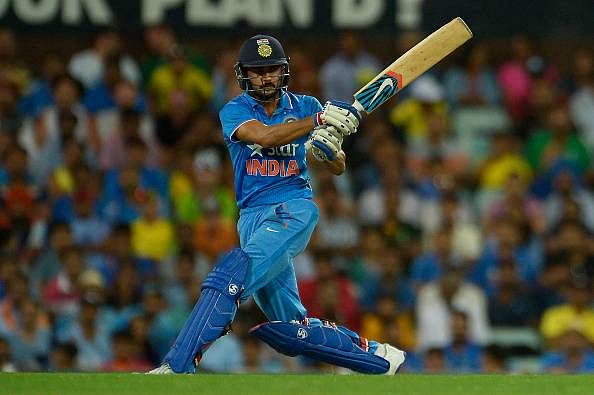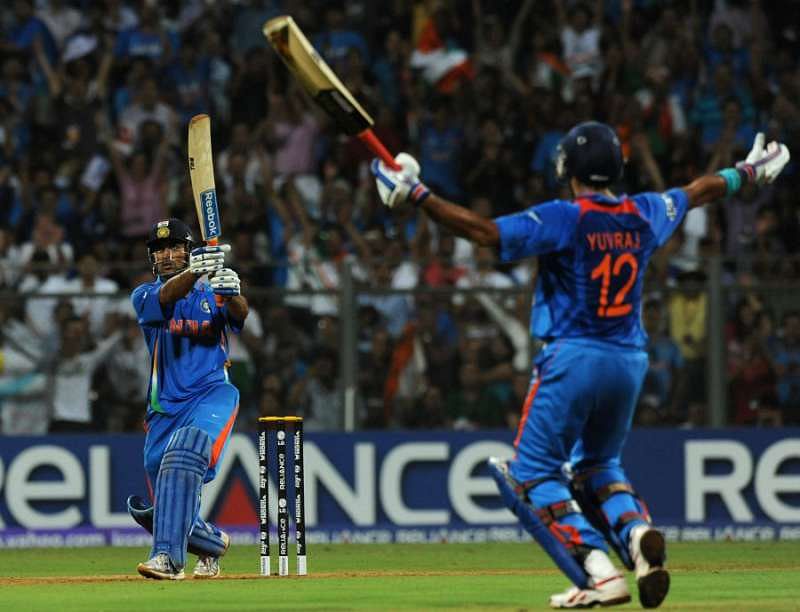
The art of letting go and initiating the new: Addressing Indian Cricket Team's middle order woes

Surrounded in a mortal world that remains defined by the human emotions of attachment and belonging, the task of letting go remains a tough one indeed. Forming a queer link with the familiar, the very thought of their absence is enough to fill an individual with waves of nostalgic helplessness.
From the common bond shared between two beings in daily surroundings to enveloping a sense of oneness with childhood role models, this fondness remains an unexpressed phenomenon indeed.
In a nation as obsessed with cricket as India, matters take on a whole-new meaning. The cricketers transcend the ordinary, entering the realm of craziness, with fans showering their infinite support to their chosen player.
Supporting them blindly through the highest pinnacles and the staggering depths, an unconditional allegiance unfolds over the years, witnessed most drastically when the waning player, no longer at his prime, stands at the twilight of his career.
Each error is defended aggressively and each fact is stated painstakingly to prove his credentials. His inconsistent run is masked with his one-off match winning haul while the continuous talks of his replacement and his eventual end is enough to drive one into fits of hysteria.
As staunch supporters refuse to accept the failing form of Mahendra Singh Dhoni and Yuvraj Singh, the greater truth remains that Indian Cricket would do well to usher in youngsters and groom them before the 2019 World Cup gets underway in England.
MS Dhoni: The finisher that was
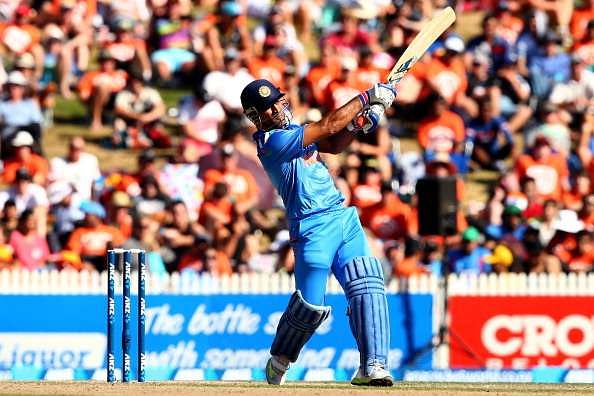
The fourth ODI between India and West Indies guided one’s memory back to the historical day in June 1975, when England and India locked horns in the first ever World Cup match in the sport. The celebration soon gave way to a sense of frustration, as Sunil Gavaskar crawled his way to a 174-ball unbeaten 36, in quest for England’s 334.
The maverick would go on to shatter and build many cricketing records but it would not be a hyperbole to suggest that the ghost of this innings have continued to stay on.
***
As Dhoni huffed and puffed his way to a 114-ball 54 against West Indies in Antigua, almost replicating the whirlwind of emotions felt forty-two years earlier, questions on his effectiveness as a finisher and his exact role in the Indian middle order refused to decease.
From toppling the best bowlers in the death overs to succumbing to dwindling prowess, Dhoni’s journey remains a lingering one indeed.
In 295 matches, the former skipper has amassed 9496 runs at an impressive average of 51.32 and a strike rate of 88.69. Due to his aggressive persona in run chases for India, Dhoni stamped his authority as possibly the world’s best finisher, guiding his team to innumerable triumphs against the best of rivals over the span of his career.
His average of 97.36 in 91 successful run-chases tells its own tale. He has remained unbeaten in 38 of those innings, striking the ball at 94.73, giving adequate proof of his immense skills and unquestionable talent.
However, his snail-paced innings in faraway West Indies has converted the hushed murmurs about his diminishing ability to finish off games into hoarse cries. Walking to the crease with India needing 143 to win from 224 deliveries, one would have expected an easy cruise towards a win.
The 19 overs he played, at a strike rate of 47, were painfully horrendous, bringing to the fore harsh truths which need immediate attention.
| Average from 2004-2013 (strike rate) | Average from 2014-2017 (strike rate) | |
|---|---|---|
| All run chases | 52.56 (82.59) in 102 innings | 38.52 (78.01) in 23 innings |
| In wins | 103 (90.20) in 57 innings | 67.75 (91.86) in 6 innings |
| In losses | 26.58 (71.17) in 44 innings | 38.87 (71.55) in 16 innings |
The above table clearly shows Dhoni’s falling numbers while batting second for India over the years. Being a renowned finisher who has made a name while batting under pressure, it is but necessary to analyse his statistics while chasing and not when he is batting first.
Except his knock of 80, which was scored against New Zealand last year, Dhoni scored a fifty way back in 2015. He has remained unbeaten in a run chase just two times in this specified period, the last of which again dates back to 2015 - against West Indies in the World Cup.
More importantly, he has been dismissed on 21 occasions while chasing a target; in which India have come up second best 16 times. 10 out of these 16 dismissals have come after the 36th over, when the team has been in dire straits, needing a Dhoni special to rescue them.
Unable to rotate strike, the pressure accumulates on him, wherein he appears a forlorn figure, trying hard to revive his batting.
Even while batting higher up the order, at number four, Dhoni’s figures hardly seem to inspire. In 4 innings while chasing, he has scored at an average of 34.5 and a strike rate of 74.19 since 2014. When he is batting at number 4 in the first innings, one is met with startling numbers, forcing one to compare the Dhoni that was and the Dhoni that remains.
| Average from 2004-2013 (strike rate) | Average from 2014-2017 (strike rate) | |
|---|---|---|
| Batting first | 69.76 (101.84) in 22 innings | 43.75 (78.12) in 4 innings |
| Contribution in wins while batting first | 94.20 (105.84) in 15 innings | 55 (80.88) in 2 innings |
| Batting second | 80.51 (98.78) in 14 innings | 34.50 (74.19) in 4 innings |
| Contribution in wins while batting second | 124 (101.36) in 10 innings | 80 (87.91) in 1 inning |
While the team has been preparing the likes of Kedar Jadhav and Hardik Pandya to hone the role of a finisher, pushing Dhoni up the order to play his natural game and ease pressure on him, he has been unable to up the ante in crucial junctures, consistently.
His strike rate has fallen tremendously and if it is argued that he should remain in the team for his fitness, one cannot guarantee that by 2019, when Dhoni is 38, he would still be as swift as he is today, especially with his history of back spasms over the years.
A younger player will be equally, if not more, effective in running between the wickets and if he can prove his mettle on the big stage, his recruitment before the 2019 World Cup shall be beneficial for Indian cricket in the long term.
Also Read: Why is MS Dhoni on a Grade 'A' contract?
Yuvraj Singh: The fighter well past his prime
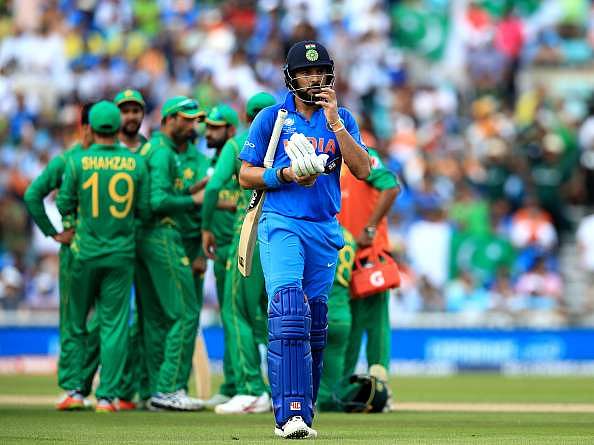
Championing the art of fighting back against all odds that life has thrown at him, Yuvraj Singh exemplifies the ideal and the courageous. Blending an aggressive nature with a calm belief in his ability to thwart the opposition, Yuvraj has remained a crucial lever to Indian batting over the years.
Guiding the team to the inaugural T20 World Cup in 2007 and following it up with his monumental efforts in the 2011 World Cup, Yuvraj Singh has personified hard work like no other. Surviving cancer with élan and walking on the field again, the journey of the 35-year old Punjabi remains nothing short of a fairy-tale, defined by grit and determination.
Making his comeback into the national ODI team after a gap of three and a half years, Yuvraj once again displayed the spirit that resides within him. After a domestic season in which he amassed 672 runs in 8 innings, at an average of 84 and a highest total of 260, he was included in the national squad that would take on England earlier this year.
He notched up his highest LOI total in the very second match after his comeback, scoring 150 runs.
Soon, however, a strew of injuries in the Indian Premier League gave way to an indifferent and inconsistent run in the Champions Trophy and the on-going series against West Indies. After averaging 66.67 against England, he has averaged 27 in 7 games, with a strike rate of 89.5.
What has failed to escape one’s notice is the drastic drop in Yuvraj’s reputation as one of the best fielders in international cricket. Even though he has been churning out runs, his 35-year-old self fails to grasp the ball and stop the risky singles that are taken by the batsmen on the crease. With a slow throwing arm, he is often guilty of giving away singles that should have ideally been stopped.
When MS Dhoni dropped stalwarts like Sourav Ganguly and Rahul Dravid from the squad that toured Australia for the CB Series, citing fitness and their liability in the field as their exclusion, it was hailed as a revolutionary move, thus ushering in a new age Indian team, for whom fielding held as much value as batting or bowling.
Recently, Virat Kohli dropped Sarfaraz Khan from the playing eleven in Royal Challengers Bangalore, quoting his fielding as the sole reason for the decision.
"Sarfaraz understands the areas in which he needs to work on as far as the fitness and fielding part is concerned. You can't afford to have too many guys in the field who are not up to the mark with their fielding.”
For the uninitiated, Sarfaraz has a batting strike rate of 173.52 and despite that, Kohli decided to go in for a better fielder, having understood the dynamics of this aspect in cricket. With Yuvraj presenting himself as a poor fielder in 2017, the odds of him improving in the 2019 World Cup remain bleak.
With his bowling not being utilised, courtesy its flaking effectiveness, it would not be an unwise decision to test a younger player in the number 4 position. The management would do well to chalk out the route Indian cricket is willing to take, in the lead up to the next edition of the World Cup.
By encouraging a new breed of players to enter the set-up, a broader framework would be in place which would only benefit the team. If the youngsters fail, the onus can be shifted back to the big guns like Dhoni and Yuvraj.
But what guarantee is possessed that the duo will be fit and raring to blaze in two years? What after the two decide to eventually walk into the horizon?
Sans any experience, the replacements might wilt under excess scrutiny and it is only advisable that a new crop of emerging cricketers be played and tested, so that by 2019, the talent pool available then will exceed the one that is available currently.
Also Read: Union Minister alleges that Virat Kohli, Yuvraj Singh fixed Champions Trophy final
Rishabh Pant: The youngster who deserves a fair bit of run
While one is expected to masquerade one’s inner emotions and go on uninhibited in the daily life, unfortunate circumstances allow that wee bit of liberty- the liberty to mourn and to show one’s weaker side; the freedom to lament and remain in a state of melancholy.
Suffering from the sudden bereavement of his father, Rishabh Pant aged just 19 stood as a testimony to the inner strength that resides in all human beings. Displaying a great passion towards his chosen field, Pant’s fighting half century in 36 balls, albeit in a losing cause for Delhi Daredevils, just hours after he had cremated his father, brought forth excited thoughts at the prospects of a great career ahead for him.
Engrossed in the lonely world while batting against Royal Challengers Bangalore, Pant showed resilience as wickets kept tumbling at the other end. By the time he was dismissed, the world had stood up to applaud the inspiration that had emerged.
Having smashed his way to a 24-ball 78 in the Under-19 World Cup against Nepal last year, Pant scored a 111 against Namibia in the same tournament, incidentally on the same day as he was picked up for Delhi Daredevils in the Indian Premier League.
He was the fourth youngest player to score a triple century in first class cricket, following it up with a 48-ball century. He amounted 972 runs this season in 12 innings, at a staggering strike rate of 107.28. He was named the captain of Delhi in the Vijay Hazare Trophy, replacing Gautam Gambhir, in a bid to hone the future.
The wicketkeeper-batsman provided the perfect foil to Dhoni, with rapid strides being taken every time he walked out to bat in the IPL. While Dhoni remained diffused in tough conditions and a diminishing strike rate, Pant floored even Sachin Tendulkar with a match winning 97 runs off 43 deliveries, chasing Gujarat Lions’ 208.
It is not always necessary that a youngster grinds in the domestic circuit while a holy grail is offered to an older player. With a strike rate of 151.20 in the IPL, which boasts of top international bowlers, Pant can very effectively bat at number 5, switching from the role of a sheet anchor as well as a pinch hitter with ease.
Yes, Dhoni’s shoes remain too big to be filled, but with a larger pool of players, it only augurs well that youngsters are given their share of games before the best is behind them.
Again, the question of the 2019 World Cup comes to the fore. Pant can be tried in place of Dhoni in the lead up to the tournament, and the ideal choice, based purely on form and not reputation should be picked.
If players who can be ideal replacements are available, it only augurs well that Pant is thrown into the deeper waters, while keeping Dhoni aside in the reserves. No one’s place should remain a guarantee and no player should have to wait in the curtains till a retirement comes up.
Testing a player’s skill, who is clearly one for the future, in place of a legendary cricketer can never be a bad move. Maybe Pant might fail to shine and if Dhoni is still his menacing best two years later, the options will be available for the selectors to go in with the right wicketkeeper-batsman.
Anyway, Pant has been earmarked as a player that can achieve greater heights for Indian cricket. If that is the case, delaying his entry would do none good. A youngster can make his spot only if the management gives him the opportunities and it would be noteworthy to see the step that is taken by Indian Cricket over the next two years.
KL Rahul: The consistent batter who should play at number 4
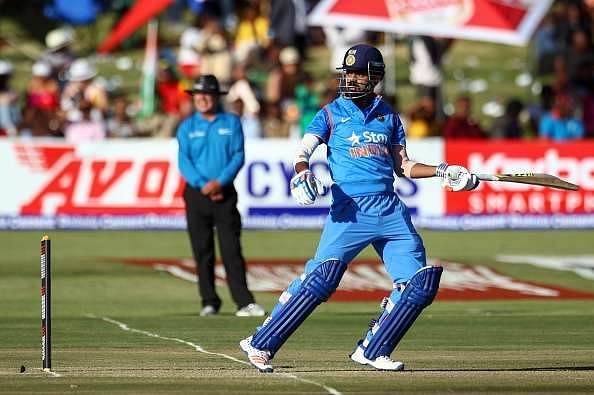
Having replaced Shikhar Dhawan as India’s preferred choice for Test opener, KL Rahul remains more than a fluke in limited overs cricket. Having made his Test debut in 2014, Rahul romped his way ahead in the five-day arena.
However, it was the IPL last year that proved to be a watershed moment for Rahul’s career, unfolding an aggressive streak that till then, had not been witnessed. Performing in a batting order that boasted of Chris Gayle, Virat Kohli, AB de Villiers and Shane Watson, Rahul stood out for his consistency and stroke play.
He scored 397 runs in 14 matches, with an impressive average of 44.11 and with a strike rate of 146.49 - the second highest strike rate in the tournament last year, behind Dwayne Smith.
Even though he has played 6 ODIs batting on top of the order, the one instance he was pushed down to number 4, he came blazing with a 51-ball unbeaten 110 in a T20I game against West Indies last year. A strike rate of 215.68 emphatically displayed the domineering presence of the Karnataka batsman.
Being a wicketkeeper, fitness has always defined the 25-year old. With Yuvraj Singh clearly declining in this aspect, it would only be sane to push KL Rahul in the number four.
If a player fails to deliver his hundred percent in every department, it remains an unsaid recommendation that someone who has the potential to be a match-winner, be thrust in the limelight so he can prove himself.
He might not be able to overtake Yuvraj Singh ever but currently, Rahul’s rising stamina and the Punjabi’s falling one suggests that it would be unfair to persist with the established and overlook the upcoming.
Manish Pandey: Strengthening the middle order reserves
With Ajinkya Rahane still dubious in the limited over format, Ambati Rayudu and Manish Pandey emerge as the backup options in the Indian middle order. With Rayudu playing inconsistent cricket, Manish Pandey comes up as the foremost favourite to find a place in the Indian squad.
Just like Rahul, he missed out on the Champions Trophy due to an injury but he has given enough proof of his temperament in tough chases over the years.
After being the first Indian to score an IPL hundred, way back in 2009, Pandey came to the spotlight with a blistering 94 off 50 deliveries that led Kolkata Knight Riders to their second title in 2014. He grabbed the limited opportunity that was presented to him in India colours by scoring a tough century against Australia Down Under last year, which helped his team overhaul Australia’s 330.
In this edition of the IPL as well, he emerged as one of the mainstays of the KKR line-up and even though his strike rate of 129 might not be up to standards in T20 cricket, he essayed his role as a sheet anchor with comparative ease.
Averaging 49.50, Pandey impressed the national selectors but an untimely injury pushed him out of the Champions Trophy.
With the 2019 World Cup still two years away, the moment is ripe for the grooming of younger players. With India touring South Africa and hosting Australia, it would be preferred if youngsters can be given the chances to grab their spot and prove their mettle against quality opposition and in tough conditions.
If they fail, we always have the back up of Dhoni and Yuvraj Singh but if they do blossom, they should be persisted with. The elder statesmen are at the brink of their glorious careers and sooner or later they will have to make way. It would only be befitting if the duo can propel their exit if they find the younger player talented enough.
A younger batsman scoring the regular 40s at a strike rate of 80 with immense fitness remains a safer bet than a 36 year old player who does exactly that. The decision is yet to be made but the sights are for all to see.

